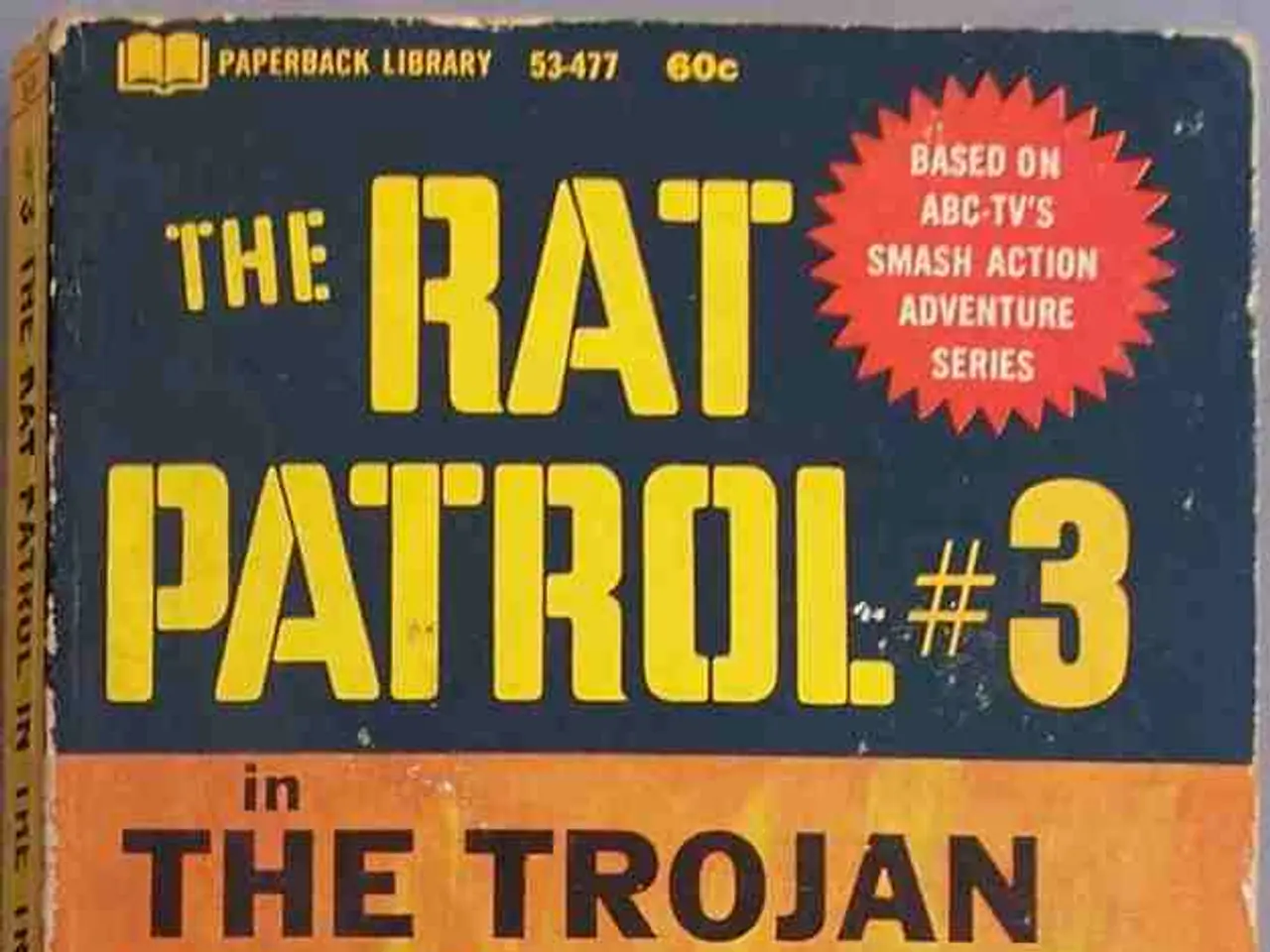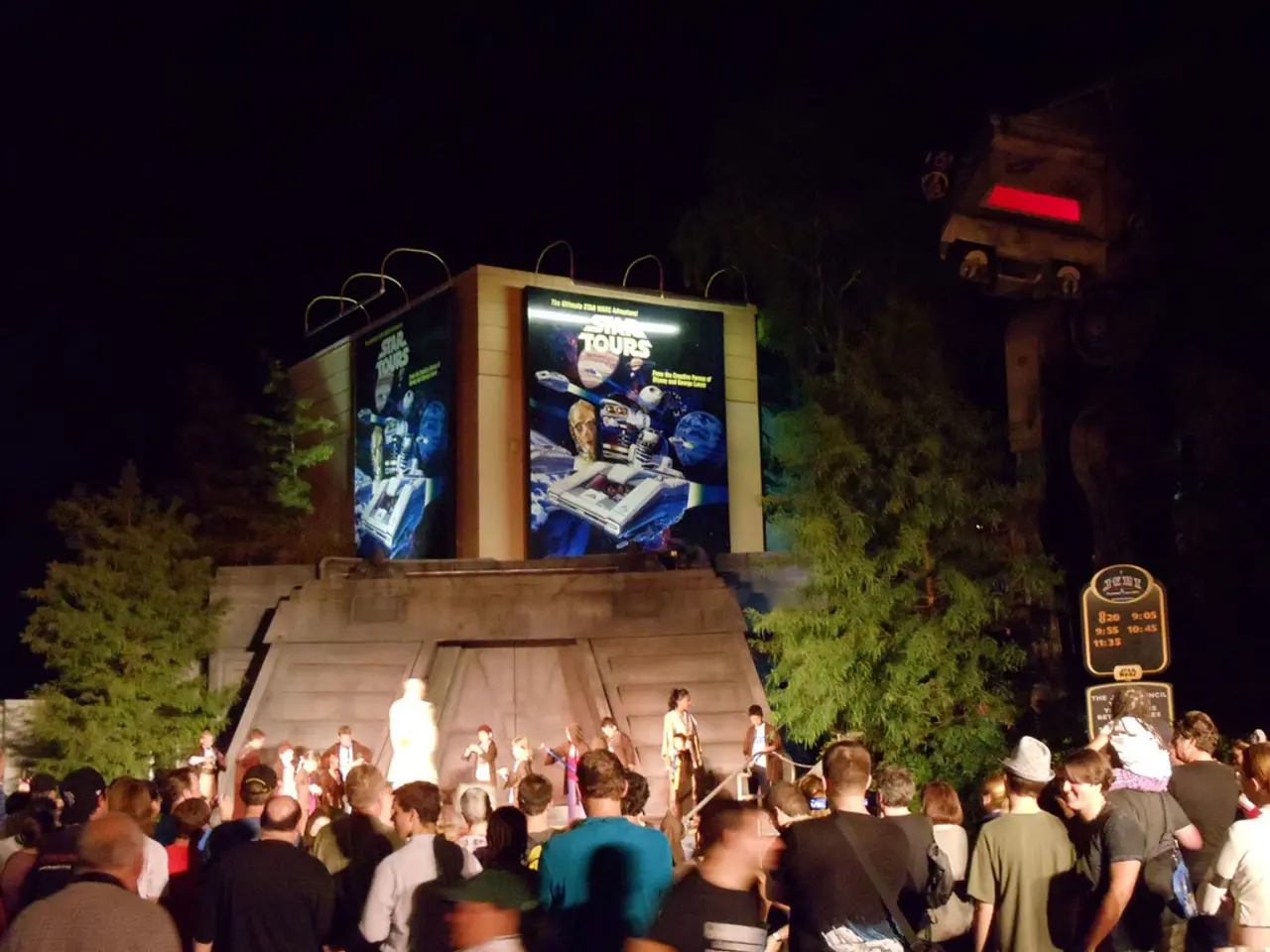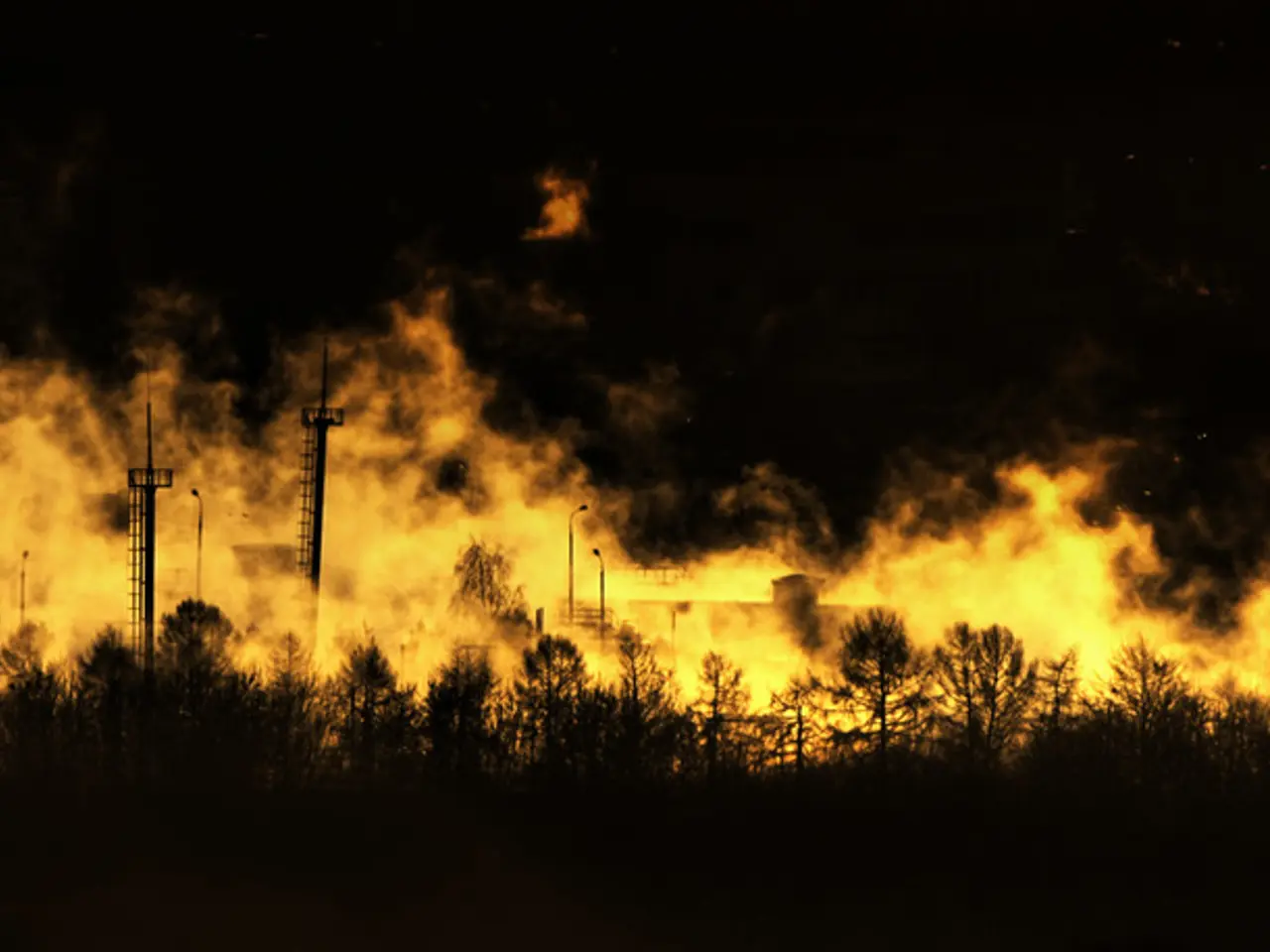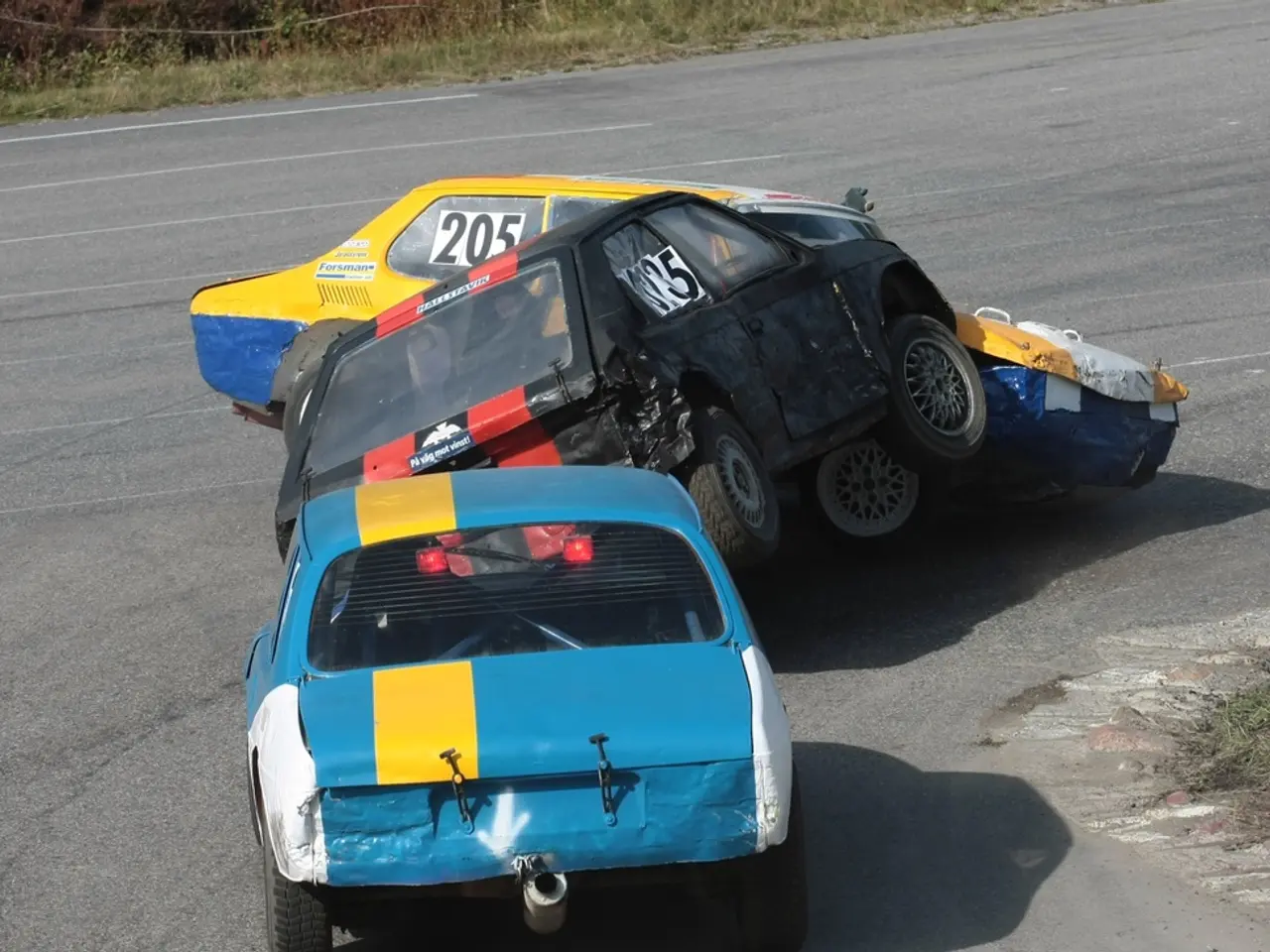Netanyahu's Iran Strategy: Unravelling His Goals
The Israel-Iran conflict, which began with Israeli airstrikes on June 13, 2025, has significantly escalated regional tensions and disrupted the balance of power in West Asia.
Regional Balance of Power
Israel's unprecedented strike involved over 200 fighter jets attacking about 100 Iranian targets, including key nuclear sites like Natanz and military installations across the country, resulting in the death of top Iranian military leaders and nuclear scientists [1][3]. In retaliation, Iran launched missile and drone attacks on Israeli military and civilian targets, causing civilian casualties on both sides and indicating that the conflict has escalated beyond a limited confrontation [3][5].
The conflict poses a threat to the broader region, potentially destabilizing existing alliances and shaking Moscow’s foothold in the Middle East. The potential collapse of the Islamic Republic or Iran acquiring nuclear weapons could dramatically alter power distributions [4]. The previous normalization efforts in the Middle East, such as the Abraham Accords involving Israel, UAE, and others, face setbacks amid renewed hostilities, threatening emerging regional cooperation initiatives [4].
Implications for Iran’s Nuclear Program
The strikes inflicted substantial damage on Iran’s uranium enrichment facilities, including the Natanz and Fordow plants, and disrupted air defense and missile systems [1][3]. The death of leading Iranian military commanders and nuclear scientists further weakened Iran’s nuclear program’s operational and strategic command [1][3]. Despite damage, no nuclear accidents were reported during Israel’s attack, indicating a focus on disabling rather than triggering uncontrolled nuclear events [1].
Iranian escalation and missile retaliations show Tehran’s intent to continue its military posture, though future nuclear developments remain uncertain as international mediation attempts appear stalled [3][5]. The International Atomic Energy Agency (IAEA) reported "severe" damage to above-ground halls at Natanz, but no direct breach of the underground cascade where enrichment occurs [6].
Impact on India’s Energy, Security, and Diaspora Interests
India's crucial energy security is at risk as about 60% of its crude oil imports pass through the Strait of Hormuz, potentially threatened by regional conflict and disruption in Iranian oil exports [2]. Historically, conflicts in the region have forced India to reduce imports from Iran and face supply uncertainties, which could recur if the war prolongs [2].
The geopolitical imbalance triggered by weakening Iran may increase U.S. dominance in West Asia, diminishing India’s strategic depth and its ability to balance relations among Gulf countries, Israel, and Iran [2]. India's ambitious infrastructure project, the India-Middle East-Europe Economic Corridor (IMEC), aiming to connect India to Europe through the Middle East, faces uncertainty due to the conflict, affecting long-term economic and strategic plans [4].
India’s large expatriate population (about 8 million) in the Gulf region faces heightened safety risks and potential disruption of remittances and trade pathways, echoing complications seen during past Gulf conflicts [2].
Potential Solutions and Recommendations
To mitigate these challenges, several solutions and recommendations have been proposed:
- Proposal for an Indian Ocean Rim Coalition under SAGAR to provide convoy escort and medical assistance, coordinating with CMF-153.
- India is advised to re-energise the India-Iran-U.S. trilateral Track 1.5 to explore confidence-building measures, such as real-time IAEA sensor data sharing and regional nuclear-safety hotlines.
- Indian lawmakers are advised to review mercantile marine insurance clauses and issue an Advisory to Indian Flag Vessels mandating AIS transponder activation and naval contact points in case of drone harassment.
- The IAEA reported "severe" damage to above-ground halls at Natanz, but no direct breach of the underground cascade where enrichment occurs [6].
- India is suggested to lock in 10-year LNG supply from the United States and Mozambique to secure energy sources.
- An additional P-8I squadron is recommended to be deployed to INS Dega for persistent ISR (Intelligence, Surveillance, and Reconnaissance).
- India is recommended to fast-track SPR Phase II, aiming to raise oil storage cover to at least 22 days.
- India is suggested to update the e-Migrate database with geofenced SMS alert capability and pre-position Air Force C-17s at Muscat and Abu-Dhabi for non-combatant evacuation operations (NEO).
In conclusion, the Israel-Iran war that erupted in June 2025 has severely destabilized the regional power balance by crippling Iranian military and nuclear capabilities, while escalating military responses raise risks of broader conflict. For India, the conflict threatens vital energy supplies, strategic influence in West Asia, and the welfare of its extensive diaspora, while jeopardizing key connectivity projects meant to enhance its geopolitical stature [1][2][3][4][5].
- The escalating Israel-Iran conflict, with its consequences for Iran's nuclear program and regional politics, has made general news headlines across the globe and garnered attention from governmental bodies focusing on war-and-conflicts, geography, and international politics.
- As the Israel-Iran conflict intensifies, respective retaliations have disrupted the balance of power in West Asia, potentially affecting India's energy security, strategic relationships, and the welfare of its expatriate population, thereby becoming a matter of mains interest for Indian policymakers.








